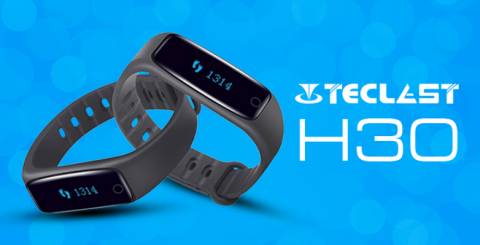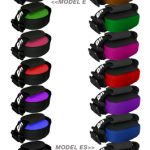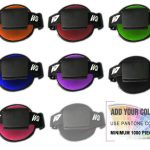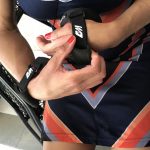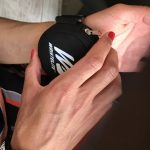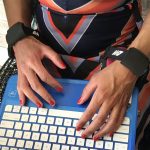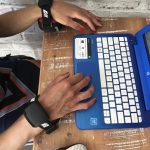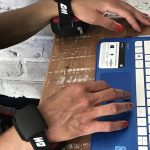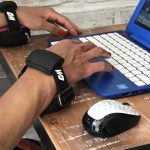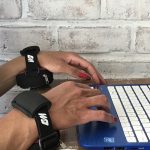If you’re in the market for something nice to wear on your wrist, your two main options are a smartwatch and a fitness tracker. The question is – which should you go for?
The following guide provides some basic considerations to help you make an informed decision. In the guide, we look at the capabilities of each device, key differences, pros and cons of each, and how to make a decision.
Some background; what is it and what does it do?
Smartwatches
A smartwatch is a portable device worn on the wrist like a traditional watch. However, unlike traditional watches, they have smartphone features such as touchscreens and support apps. Some smartwatches can also record your heart rate and other vital signs.
Smartwatches perform several functions which have made them popular among consumers. At a bare minimum, the watch will display time and date as well as your messages and calls. Most smartwatches will also display notifications from your smartphone.
Beyond that, smartwatches are capable of the following:
- Answering messages by voice: A smartwatch makes it possible to answer you messages without taking the phone out of your pocket. This is especially true for smartwatches running on Google’s Android Wear operating system. Most of the big wearable device brands including Motorola and LG run on this OS. When a message comes in, simply lift your wrist and speak to the watch to reply.
- A range of applications: Both Android and Apple smartwatches give users access to plenty of apps. For instance, the Apple Watch will launch the Uber app and even airplane apps, allowing you to hail a cab or book a flight from your wrist. Most Android smartwatches also support the Uber app as well as apps for several digital retail stores.
- Fitness tracking: While not specifically designed for this, the best smartwatches also make it possible to track various fitness metrics. If you’re an athlete, for instance, you’ll be able to track your sprints. Additionally, you’ll find a heart rate monitor and pedometer to help you track workouts.
Fitness Trackers
A fitness tracker is another wearable device that resembles a smartwatch. Like smartwatches, they are also worn on the wrist, and some even display date and time like traditional watches. However, their primary purpose is to track vital body signs such as heart rate, body temperature, and the speed at which you’re walking or running to help you stay healthy at all times.
In a nutshell, the following are some of the tasks you can accomplish with your fitness tracker;
- Heart rate monitoring: Fitness devices use two methods to track the rate at which your heart is beating. The first and most common method is using an Optical Heart Rate Monitor (HRM). It a complex process but basically, light is shined on the skin, and the perfusion of blood measured. The second method is bio-impedance sensors. These sensors measure how well the body resists the flow of current. A special formula is then used to translate the resistance to heart beats per minute.
- Temperature sensing: Measuring your body temperature while you’re engaged in some physical activity is another feature provided by most fitness trackers. If you’re an athlete, this metric should help you decide the best recovery time between intense workouts. Also, if you see drops and spikes in your temperatures, you can visit the doctor immediately for a checkup.
- Stress/mood reading: This sounds strange, but yes, most of the advanced fitness trackers can also read moods and determine if you might be stressed. To do this, they use what is known as a Galvanic Skin Response (GSR) sensor which measures electrical conductance of the skin to find out if you’re relaxed, breathing deeply, stressed, and so on. This can be ideal for people with phobias, PTSD, and stress issues.
- Acceleration measurement: Acceleration is just that, the rate at which your speed is changing. Fitness trackers are equipped with sophisticated acceleration sensors that can detect even the slightest movements. Some of these accelerometers even come with gyroscopes to measure orientation and rotation.
- GPS sensing: Finally, most fitness trackers have Global Positioning System (GPS) sensors to tell you exactly where you are within the neighborhood. This can prove quite useful if you enjoy running and hiking. After hiking for a few hours, if you feel lost, you just need to check your fitness tracker to see where you are and which major roads are close by.
Key differences to keep in mind
After summarizing the capabilities and functions of both devices, let’s now turn to what makes them different from each other. These differences should help you determine which between the two would be the best pick for your immediate needs.
There are four main differences to consider;
A smartwatch is more like an extension of your smartphone. It is designed to help you communicate with friends, family, and colleagues. You can send texts, make calls, and share content on social media.
Fitness trackers, on the other hand, are designed to help people track vital health signs. They help wearers track their heart rates, temperature, acceleration, and so on. They might perform other functions, but tracking is their primary concern.
Regarding design, smartwatches are bigger and more noticeable while fitness trackers are slimmer and “cuter.” That, however, does not mean that all smartwatches are bigger compared to fitness trackers.
It’s also notable that smartwatches have a lot more internal storage space and processing power compared to fitness trackers.
- Fitness trackers do not have native app support
As already mentioned, with the smartwatch, you can sync everything with your smartphone. This way, you can access most of your smartphone apps on the smartwatch and vice versa.
Fitness trackers do not have native app support and for that reason cannot be completely synced with a smartphone. Don’t get this wrong. You can still pair your fitness tracker with your smartphone. But, you cannot install apps on the device.
- Price differences – Smartwatches are more expensive
The reason for this is obvious – even the best fitness devices don’t have the same features provided on smartwatches. Also, fitness devices are mostly made of rubber and plastic whereas smartwatches are made from durable steel or metal. This alone would tell you that smartwatches are designed to last longer.
What’s more, fitness trackers are… just bands, whereas smartwatches have a watch face and a band. That said, you can still find reasonably cheap smartwatches out there if you look carefully.
Making a decision
After taking into account all this information, it should become a little easier to decide whether it’s a smartwatch or fitness tracker that you want.
In general, you should get a smartwatch if you’re looking for much more from your wearable than simply tracking your fitness progress. This makes smartwatches a good pick for people who want to use their wearable to receive text, reply emails, receive calendar alerts, and the other communication functions.
Fitness trackers, meanwhile, are recommendable if you specifically intend to use your wearable to track your health metrics. This makes the devices a perfect choice for people who love to exercise, as long as you are not interested in answering calls and replying texts while working out.
Final thoughts
If you’re still struggling to pick between the two, there are a few ways out. For instance, why not go for a device that offers the best of both worlds? There is an increasing number of fitness trackers that provide more advanced notifications and smartwatches with built-in tracking capabilities such as the Cronovo smartwatch shown below.
In general, smartwatches that run on Android Wear 2.0 are will give you a taste of both worlds. The OS packs a host of new features and lets you add apps directly on your smartwatch. Better still, you don’t need your smartphone nearby for the smartwatch to work! To put it simply, you could use this device as a fitness tracker without losing out on much.
Pros and Cons of Smartwatches vs. Fitness trackers
The following are some of the advantages and shortcomings of each option.

